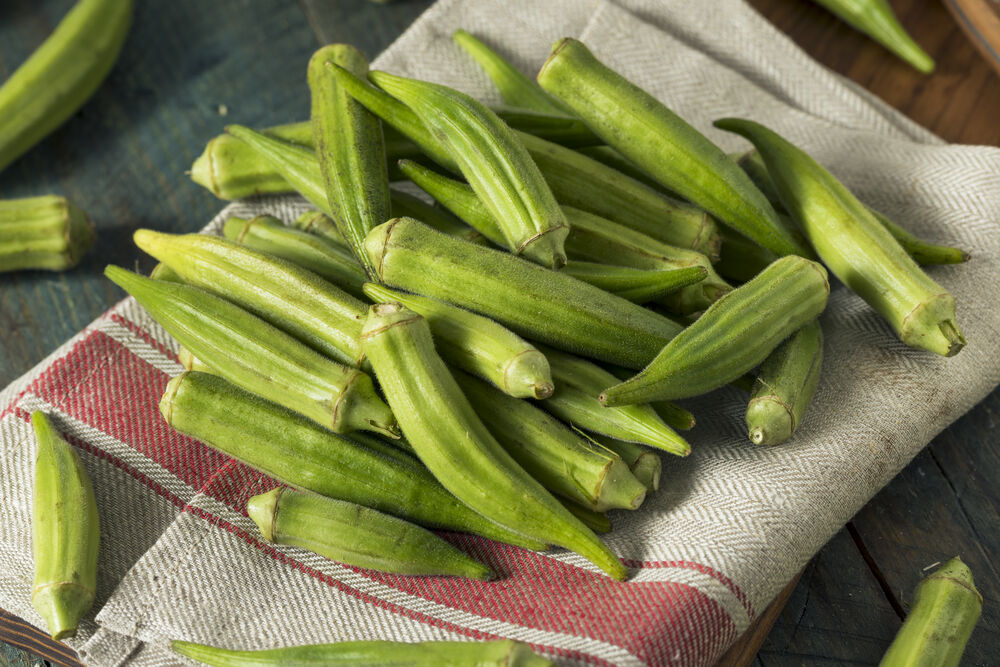Sauteed, not fried: Viewing okra in a new light
Published 10:00 am Saturday, June 11, 2022

- Okra is a common ingredient in the south, and its growing process is easy and beautiful.
Being from the north, there was a learning curve in the kitchen when I married my southern gentleman. Since, I’ve learned to make proper sweet tea, boil peanuts, make some mighty fine sausage gravy — although my biscuits are lacking so I cheat with the ones in the tube — and can serve up a tasty mess of peas.
When we were first married, my husband asked for okra with dinner. I’m an accommodating kind of gal, so off to the store I went to secure some okra. When he got home, he looked in the pan and asked, “What is that?” I said, “Okra … duh”. At which point, I was told that okra was breaded and fried not sauteed with garlic and olive oil. Well, it’s been 24 years now, and I have yet to make fried okra, but he sure does fancy the way I make it now.
Trending
I may not be from around here, but I have grown my own okra, sauteed some, pickled a few, and let some stay on the vine until they were about six or seven inches long, dried them, and made okra Santa ornaments out of them. Not bad for a Yankee.
Okra is an easy plant to maintain, and the plants produce beautiful hibiscus-like flowers.
Planting begins in mid-April through mid-June. Planting can be done again in late summer, during the month of August. Okra is in the same family as cotton and, like cotton, cannot tolerate a severe drought. It grows best in well-drained soil that has been deeply tilled. Adding compost or other organic matter when planting will increase the water-holding capacity and lessen the chance of drought conditions affecting the crop. Water weekly in the absence of rainfall.
Okra prefers a soil pH between 6.0 to 6.5. A 4-12-12 fertilizer can be worked into the top four to six inches of soil at planting. Side dress with 33-0-0 fertilizer at first fruit set and again about a month later.
Okra is a fairly large plant, so space plants 24 inches apart in rows, with rows being spaced three to four feet apart.
Suggested varieties include Annie Oakley II, Cajun Delight, Clemson Spineless 80, Emerald, Lee, and North and South.
Trending
Most okra varieties mature in 55 to 60 days and are ready to be picked four to six days after flowering. Pods should be harvested when they are approximately two to three inches long. They grow quickly, so keep an eye on them or you’ll be making crafts out of the oversized, tough pods.
If you’re looking for something different to do with okra, try this recipe from “Cook with Manali.”
Bhindi Masala (Spiced Indian Okra)2 ½ tablespoons oil
1 pound okra, chopped into rounds
1 teaspoon cumin seeds
1 medium red onion, chopped
1 inch ginger, chopped
1 green chili, chopped
2 medium tomatoes, chopped
1 ½ teaspoon coriander powder
½ teaspoon turmeric powder
1 teaspoon amchur (dried mango powder)
(lemon juice can be substituted for amchur)
¼ teaspoon red chili powder
¾ teaspoon salt
Garam masala, sprinkle
Julienned ginger, for garnish (optional)
Wash and pat dry each okra pod with a paper towel and then chop into rounds (remove the head and tip of the tail before chopping. Set aside. Heat one tablespoon of the oil in a pan over medium heat. Once the oil is hot, add the chopped okra to the pan. Let it cook for 10 minutes, then lower the heat to low and cook for five additional minutes. Stir often.
There should be very little sliminess left. Remove pan from heat and transfer okra to a bowl. Return pan to stovetop and heat the remaining one-and-a-half tablespoons oil over medium heat. Once the oil is hot, add cumin seeds and let them sizzle for a few seconds.
Add chopped onion and sauté for two to three minutes, until soft. Then add ginger and green chili; cook for one minute.
Add chopped tomatoes and cook for approximately four minutes, until soft and mushy.
Add the spices – coriander powder, turmeric, amchur (or lemon juice), red chili powder, and salt. Add one tablespoon of water so that the spiced do not burn. Stir well.
Add the cooked okra to the pan and mix well. Set heat to medium-low and cook for five minutes. Sprinkle with garam masala, and garnish with julienned ginger, if using.
Serve with rice, roti, or toasted pita wedges.
Upcoming: The next Gettin’ Dirty at the Library is this Tuesday, June 14, from 11 a.m. – 12 p.m. at the Athens-Limestone Public Library. The topic is Rain Gardens and will be presented by regional extension agent, Rhonda Britton. Until next week, happy gardening.





